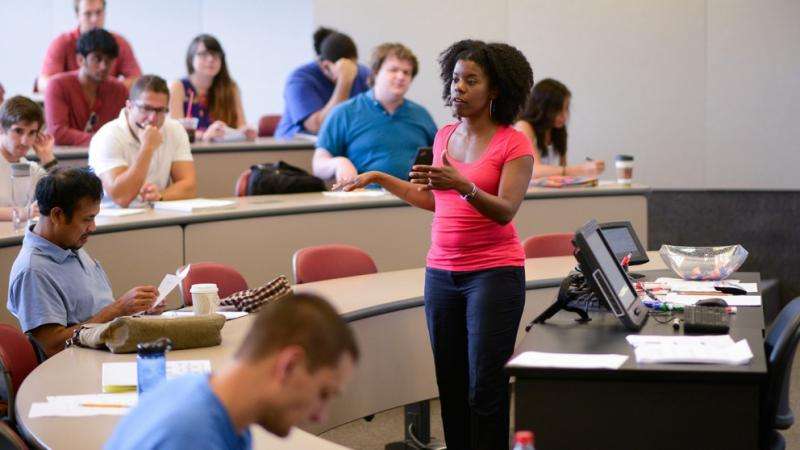Study highlights importance of multimodal communication in higher education

Research from North Carolina State University finds that "multimodal" communication - using a mix of words, images and other resources - is important for students and faculty in higher education, a finding that argues for increased instruction in multimodal communication for undergraduates.
At issue are "modes" of communication, with each mode being a different means of communicating information. For example, speech, the written word, sound, physical gestures and graphic images are all different modes of communication. Multimodal communication is communication that takes advantage of multiple modes, such as a PowerPoint presentation or a television commercial.
"We wanted to know how relevant multimodality was to academic writing instruction," says Gwendolynne Reid, a Ph.D. student at NC State and lead author of a paper on the work.
"We know, from previous research, that multimodal communication is important for professional and civic life, but we wanted to know if it was also important for success in academic life," says Robin Snead, a lecturer at the University of North Carolina at Pembroke and co-author of the paper. Snead worked on the project while a Ph.D. student at NC State.
The researchers surveyed 65 faculty members in multiple disciplines at a large university. The survey collected information on the study participants, the communication assignments they gave their students and the types of communication they did themselves.
The researchers found that, across all disciplines, more than half of study participants assigned multimodal communication work to students - and more than 70 percent did multimodal work themselves. Multimodal work was most common for science faculty, with 90 percent reporting that they engaged in multimodal communication.
The most common form of multimodal communication among all students and faculty was presentations that incorporated visual or multimedia components. Another common form of multimodal communication was formal academic writing that included visuals, such as graphs or charts.
"These findings tell us that it's important to continue research on multimodal communication in different academic contexts in order to inform instruction," Reid says. "What constitutes 'good' communication is going to vary according to context - good communication on an academic blog is likely to look different from good communication in a technical paper."
"We want to help students navigate these differences," Snead says. "That means helping students both understand multimodal communication and use multimodal techniques to communicate effectively."
"This is about giving students the tools they need to communicate successfully during their academic careers," Reid says.
The paper, "Multimodal communication in the university: Surveying faculty across disciplines," is published in the journal Across the Disciplines.
More information: wac.colostate.edu/atd/articles/reidetal2016.cfm
Provided by North Carolina State University



















